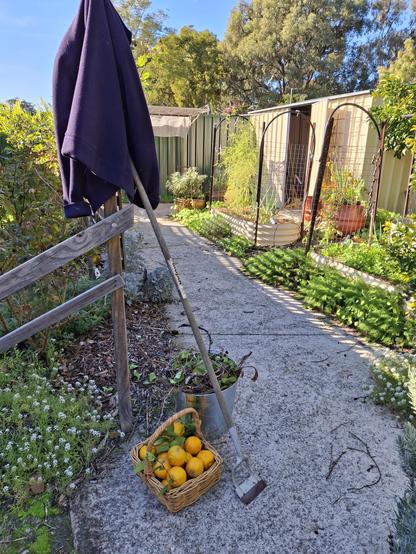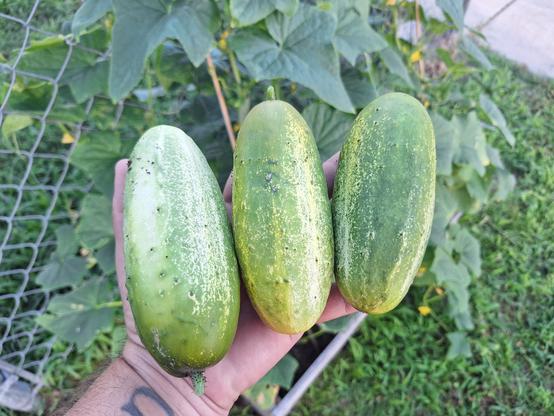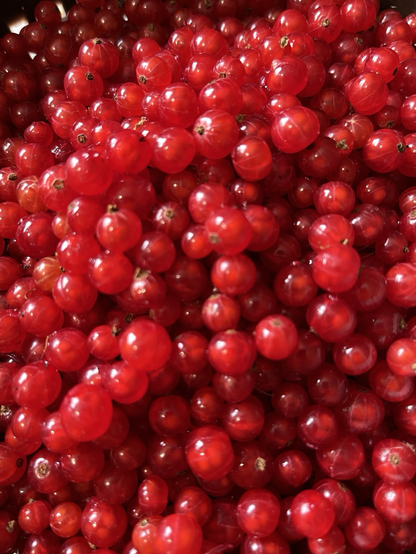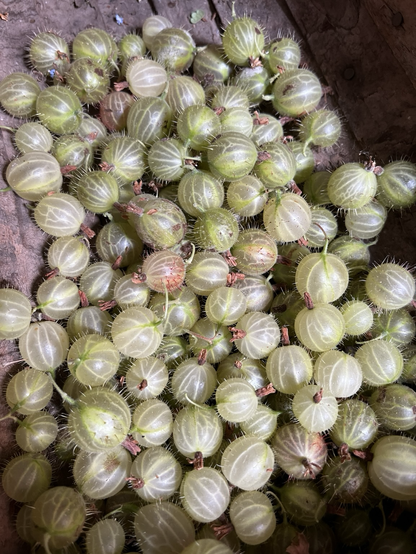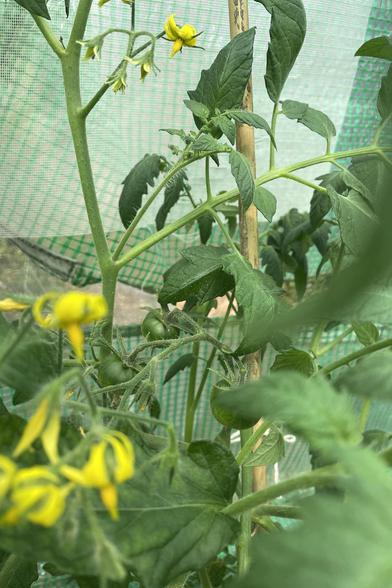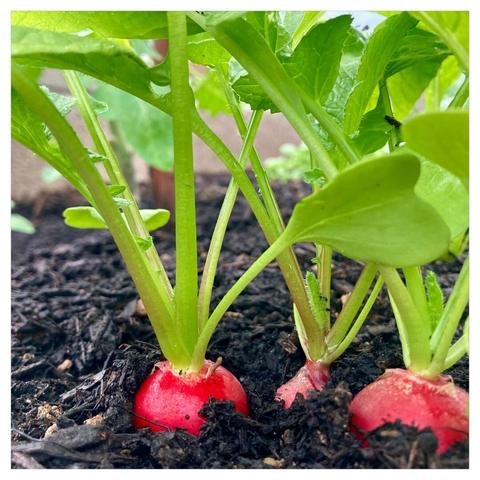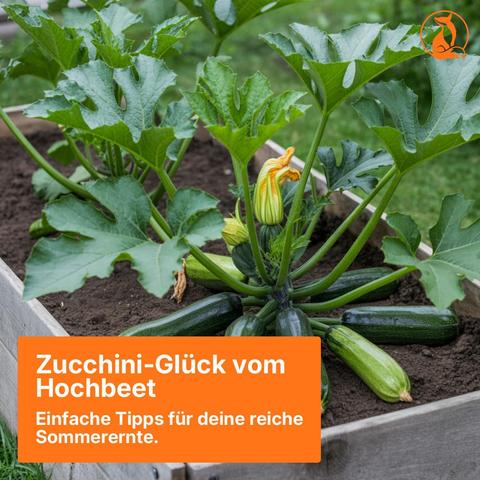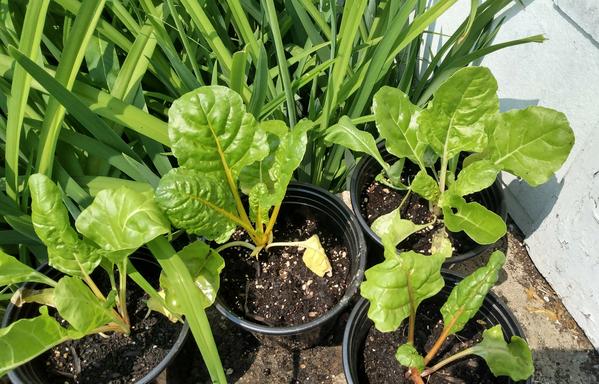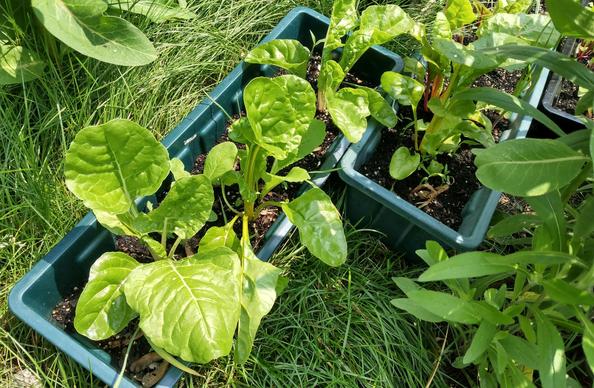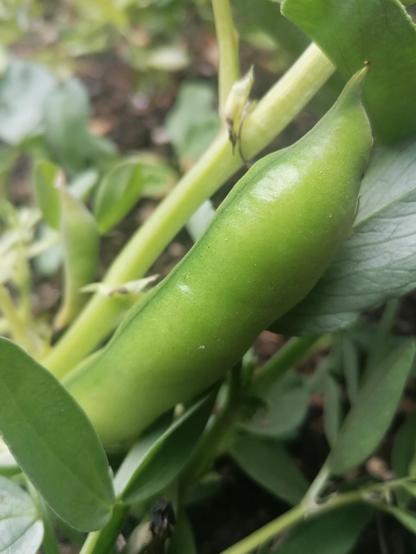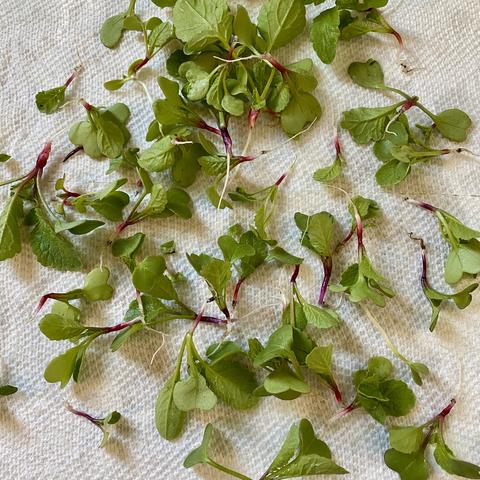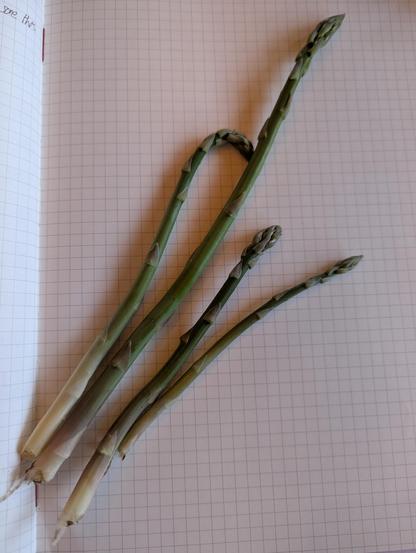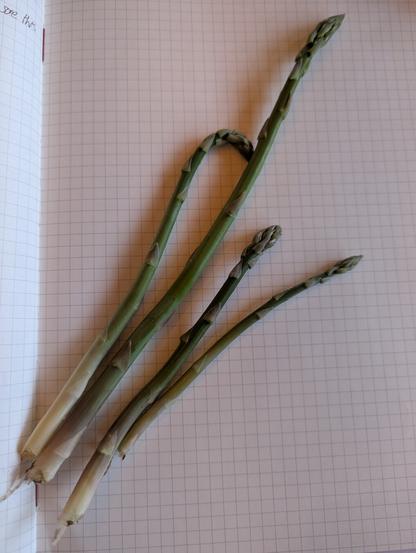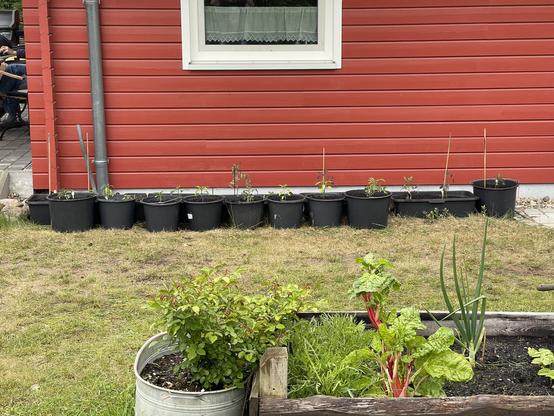A quiet morning in the garden. Picked golden yellow limes, whilst weeding.
#GrowYourOwnFood
First batch of pickles about to go down. #garden #gardening #urbangarden #growyourownfood #cucumbers
There will be ice cream and crumble.
Spent 3 hours digging at the allotment today. Planted kale and broccoli. Did tomato maintenance. Picked raspberries and cucumbers. Felt happy and grateful and at one with the earth.
#garden #growyourown #growyourownfood #berries
Wer Zucchini im Hochbeet anbaut, kennt vielleicht die Hoffnung auf reiche Ernte, aber auch die Sorge vor Platznot. Einige Gedanken zum Gelingen. #hochbeet #gartenliebe #zucchini #growyourownfood #vegetablegardening
One more note about growing #RainbowChard -- it's way easier than growing spinach or beets, and by growing it with onions or garlic in the longer containers, I keep the pests at bay!
#SolarPunkSunday #Gardening #GardeningHacks #GrowYourOwn #GrowYourOwnFood #RainbowSwissChard
From Seed To Plate: A Guide For Growing #RainbowSwissChard
by Tess Pennington | October 2018 |
"Known for its beautiful green leaves and colorful stalks, rainbow swiss chard is a great substitute for #spinach. It can be steamed or eaten raw in a #salad for an extra kick of nutrition. If you love this tasty leafy green, this guide is for you! Take your rainbow swiss chard from seed to plate!
"Rainbow Swiss chard is rich in anti-oxidants and chock full of phytonutrients. Research has shown that Rainbow Swiss Chard contains flavonoids that actually lower blood sugar making it one of the most nutritious vegetables you can eat! The leafy green is an excellent source of vitamins K, A, and C, as well as a good source of magnesium, potassium, iron, and dietary fiber. In fact, just one cup of chopped Swiss chard has just 35 calories and provides more than 300% of the daily value for #VitaminK
"Did you know Swiss chard goes by many names? The plant actually has numerous monikers, including silverbeet, Roman kale, “Bright Lights,” and strawberry spinach – but all are referring to the same plant which was discovered by a Swiss botanist. It’s still a staple and popular in Mediterranean areas. If you’ve ever considered attempting to grow Rainbow Swiss chard, why not give it try? It’s relatively easy to grow with few pests to worry about! Plus, it’s a beautiful addition to an edible landscaping or ornamental design.
"Helpful Hint: Before planting, soak your Rainbow Swiss Chard seeds in warm water for 15 minutes. This will help speed up the germination process."
Read more:
https://www.readygardens.com/from-seed-to-plate-a-guide-for-growing-rainbow-swiss-chard/
#SolarPunkSunday #Gardening #GrowYourOwnFood #RainbowChard #FoodSecurity #ContainerGardening
So, my #RainbowChard seems to have survived the deluge... And is getting huge! Time to move them into bigger pots. This is my first year growing Rainbow Chard (one of my favorite greens to eat), and the leaves can be harvested while small. The bigger the pot, the bigger the ribs -- which are wicked tasty and full of nutrients! I'll be posting some growing tips and recipes later today!
Cannot wait to harvest the broad beans! #growyourownfood #eatwhatyougrow
Planted my little "satanic" potatoes today (along with some other ones that were raring to go). After trying to grow bigger white potatoes and little red potatoes in containers last year, I had a lot more luck with the little red potatoes (which are my favorites). So I saved some of the ones that were too small to eat and planted some of them about 4 weeks ago in big containers. I planted some last week that are just starting to leaf out, and then a bunch more today.
#SolarPunkSunday #Gardening #Potatoes #Maine #GrowYourOwnFood #GrowingPotatoes
Thinned the radishes this morning. I think they’ll be great in a salad!
Who knew you could grow asparagus in the high desert? We have them growing in a well mulched trench on the north side of our greenhouse. This is the second season and the spears are popping. So delicious!
#gardening #garden #growyourownfood #asparagus #squarefootgardening #NorthernNewMexico
#newmexico #gardening #asparagus #garden #growyourownfood
More from the #UniversityOfGeorgiaCooperativeExtension - Home Garden #GreenBeans!
"Green beans are one of the most popular vegetables for the #HomeGarden. Fortunately, they are easy to grow as well. Green beans are a warm season crop that can be planted as soon as the danger of frost has passed in the spring. Green beans grow best when air temperatures range from 65°F to 85°F. Soil temperatures should be at least 55°F for good seed germination. Air temperatures above 85°F can cause flowers to drop and slow production.
Types of Beans
Green beans come in three different types based on their growing characteristics. Bush beans are compact varieties that grow in a bush form and need no external support. They are great for raised beds and gardens limited in space.
Pole beans are similar to bush beans but grow in a vining manner and require some type of cage or trellis system for support. Pole beans can reach heights of 6 feet or more, so the support system should be strong and high enough to accommodate them. An advantage of pole beans is that they are easier to harvest; you don?t have to bend over completely to pick them like you do bush beans.
Half-runner beans are a cross between pole beans and bush beans. Half-runners can be grown without support but they spread out more than bush beans and need plenty of room to grow.
Planting
Green beans grow best in a well-prepared and organically amended soil. They should receive six to eight hours or more of sunlight every day for optimum growth. Green beans can be directly seeded in the garden and do not need to be started as transplants. Soaking seeds overnight in warm water will help speed up the germination process after they are planted in the soil. Most green beans do best when planted about 1 inch deep and 6 inches apart in the rows with 3 feet between the rows. After planting, be sure to firm the seed bed with your hand, garden tool or cultipacker. This will help ensure good soil contact and better germination.
Fertilization
Green beans are legumes and don?t require a lot of fertilizer. Green beans prefer a slightly acidic soil with a pH of approximately 6.5. Soil test for a more accurate recommendation of lime and fertilizer needs. In the absence of a soil test, add 5 pounds of 5-10-15 fertilizer per 100 feet of row. Fertilizer should be applied at planting time and again after small beans begin to appear. Additional fertilizer can be applied throughout the growing season to keep beans producing until the summer heat takes its toll.
Watering
Irrigate beans immediately after planting. Keep the seed bed moist, but not soggy, for the first week until germination occurs. Reduce watering to once every three days after the first week. Water as needed after beans become established, usually about twice a week.
Harvesting
Green beans should be ready for harvest 45 to 60 days after planting, depending on the variety. Harvest beans while they are still immature and not fully developed. This will produce a bean that is tastier and tenderer. To encourage the plant to maintain production, continue to harvest beans as they become ready. Beans should be stored in a cool, dry location and kept fresh for several days, or they can be canned for long-term storage.
Problems
Although green beans are easy to grow, there are a few problems that can occur. Insect problems include leaf beetles, aphids and spider mites. Disease issues include #anthracnose, rust, powdery mildew and grey mold. Most of these problems can be prevented or controlled by using sound cultural practices and planting resistant varieties. Occasionally an insecticide or fungicide may be needed to control insects and disease problems."
Source:
https://extension.uga.edu/publications/detail.html?number=C1006
#SolarPunkSunday #Gardening
#GardeningHacks #GardenPests
#VegetableGardens #GrowYourOwnFood #GrowYourOwn #FoodSecurity
A short, but informative piece from #CornellCooperativeExtension on #ContainerGardening
"Container gardening is a great alternative for people who have limited space, poor soil or would like to grow vegetables with less effort. Instead of a plot in your yard, you can grow your plants on a patio, balcony, porch or just about anywhere else as long as there is adequate light. Container gardening helps gardeners avoid some common pitfalls like weed competition, poor drainage, and time required to maintain a conventional garden.
"Suitable containers come in all shapes and sizes and are made of various types of materials but there are a few important requirements. All containers must have drainage holes to ensure healthy roots. They must be large enough to support your plants when fully grown and they must be able to hold soil adequately. Beyond that, the sky is the limit. Some common containers to consider are plastic and clay pots, bushel baskets, barrels, garbage cans, window boxes, milk cartons, tubs and more. Regular and elevated raised bed gardens available from garden supply companies are also very popular.
"There are a couple of very important keys to success in container gardening. Number one on the list is to provide adequate water to your plants. Container gardens will need to be watered more often than conventional gardens once they become established. The larger your container plants get the more often they need water. This becomes especially evident as we get into warm summer days and some plants may require 2-3 applications per day. Frequent watering will wash nutrients from the soil so you will need to feed container plants with either water soluble plant food or slow release fertilizers. Frequent watering also requires that containers drain well.
"A light weight soil mixture is ideal for your container gardens. You can find commercial container gardening soil mixes at your local garden center. Most of these contain various mixtures of peat moss [try and find peat substitutes like coconut coir] , perlite, vermiculite, #compost or other organic materials. Do not use normal garden soil in containers since it is usually too heavy and slower draining.
"If you are growing larger plants like tomatoes in containers be careful to choose varieties that are limited in size. Smaller fruited types or those labelled as determinate would be better choices than tall vining tomatoes. Dwarf cherry tomatoes work exceptionally well in containers. [I grow Sun Gold cherry tomatoes. Easy to grow and tasty!]
"It is easy to underestimate the size of container needed if you are doing this for the first time. If you are using smaller containers like half or one- gallon pots or milk cartons try 2-3 lettuce or spinach plants or maybe one pepper. A five gallon pail will support a smaller growing tomato plant but I usually prefer a 10 or 20 gallon garbage can for large tomatoes, or multiples of other deep rooted plants.
"Plants in containers need much of the care that plants in gardens need. Most vegetables will do best with full sun conditions with the exception of leafy greens that will tolerate some shade. You may need to thin out carrots, radishes, beets and others in containers so they don’t become overcrowded.
"Check your pots at least once a day and more often on hot days. Wilting and drooping of leaves is a sign that water is needed. Tomatoes in containers will be more prone to blossom end rot if they dry out between watering.
"If you are a beginner and want to try something simple you could pick up a patio tomato or salad bowl garden, or herb planter at your local garden center. These are already planted in appropriate containers and just need sun and water. For everyone else, use your imagination and have fun growing fresh produce.
"For more information on container gardening contact:
John Farfaglia, CCE Niagara County Horticulture Educator"
Source:
https://cceniagaracounty.org/gardening/food-gardening/container-gardening
#GrowYourOwnFood #ContainerGardening #SolarPunkSunday #FoodSecurity #Gardening
Everything you need to know about growing #Tomatoes! (from #VirginiaCooperativeExtension )
Excerpt:
"Wire-cage tomatoes develop a heavy foliage cover, reducing sunscald on fruits and giving more leeway when bottom leaves become blighted and have to be removed. Many staked plants are nearly naked by late summer. Caged plants are less prone to the spread of disease from plant handling, since they do not have open wounds and must be handled less frequently than staked plants. However, it helps to space the plants somewhat further apart (3 feet is good) to allow good air circulation between plants; humidity is higher because of the foliage density, and diseases, such as late blight, spread rapidly in humid situations. If well-nourished and cared for, caged tomatoes can produce exceptional harvests and make up for the extra space with high production. This type of culture is especially suited to indeterminate varieties."
Learn more:
https://www.pubs.ext.vt.edu/426/426-418/426-418.html
#FoodSecurity #SolarPunkSunday #Gardening #GrowingTomatoes #GrowYourOwnFood
So, I did some research on #CooperativeExtension websites last night for today's #SolarPunkSunday . It seems that #UMaineCooperativeExtension is one of the few that has a lot of free advice (many others have workshops, some with fees). I did find a few other ones -- #GeorgiaCooperativeExtension, #VirginiaCooperativeExtension. But the #UAFCooperativeExtension (University of Alaska - Fairbanks) had some really cool information about foraging for native Alaskan berries which I'll be posting later today!
#SolarPunkSunday #FoodSecurity #Gardening #GrowYourOwnFood #Composting #ContainerGardening #FoodPreservation
#Gardening #HomeGarden #RaisedBed #VegetableGarden #BackyardGarden #GrowYourOwn #ContainerGardening #Seedlings #SwissChard #LeafyGreens #UrbanGardening #GardenLife #PlantBased #GrowYourOwnFood #Gardener #HomeGrown #SustainableLiving #OrganicGardening #Gardening2025 #PlantPots #Tomatoes #Chili
